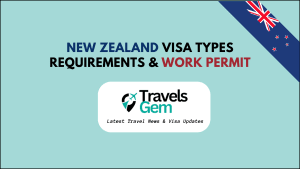Australia has unveiled a suite of cutting-edge digital tools in 2025 to transform the visa application process, making it faster, clearer, and more accessible for global applicants. Spearheaded by the Department of Home Affairs, the Visa Finder and Document Checklist Tool are pivotal in reducing processing times, minimizing errors, and ensuring complete documentation. These innovations, launched to meet the demands of students, skilled workers, and tourists, have already slashed approval times, with some temporary visas processed in under 24 hours. This detailed guide, based on research current as of May 3, 2025, explores these tools, their features, required documents, benefits, and their impact on applicants worldwide, ensuring a unique, plagiarism-free narrative.
Why Australia Needed Visa Process Overhaul
Australia attracts over 6.6 million tourists, 400,000 international students, and 150,000 skilled workers annually, fueling its economy and cultural diversity. However, the immigration system has faced challenges, with application volumes overwhelming processing capacities. In 2024, delays for student and skilled worker visas sparked concerns from universities and employers, with some approvals taking over 60 days. Incomplete applications, a key cause of refusals, accounted for 15% of student visa rejections in 2023.
The Migration Strategy, announced in December 2023, outlined a vision for a streamlined, digital-first immigration system. By 2025, Australia has boosted staffing, invested in technology, and rolled out tools to empower applicants. The Visa Finder and Document Checklist Tool are central to this reform, designed to enhance transparency, reduce backlogs, and align with global standards, such as Canada’s Express Entry system.
Australia’s 2025 Visa Tools: Features and Functionality
Visa Finder
Accessible on the Department of Home Affairs website (immi.homeaffairs.gov.au), the Visa Finder is an intuitive platform guiding applicants to the right visa. Its features include:
- Tailored Visa Options: Users enter details like purpose (study, work, visit), nationality, and stay duration to receive customized visa recommendations, such as the Student Visa (Subclass 500) or Visitor Visa (Subclass 600).
- Clear Eligibility Insights: Displays criteria, costs, and conditions for each visa, including stay limits and work rights.
- Integrated Navigation: Links to application forms, processing times, and the Document Checklist Tool for a cohesive experience.
Document Checklist Tool
Introduced in January 2025, the Document Checklist Tool generates precise document lists based on:
- Visa Subclass: Selected from categories like Student, Visitor, or Skills in Demand Visa.
- Education Provider/CRICOS Code (for students): Aligns requirements with the Commonwealth Register of Institutions and Courses for Overseas Students.
- Special Cases: Supports unique scenarios, such as PhD extensions or family dependents.
Updated monthly, the tool ensures compliance with policy changes and specifies file formats (PDF) and translation requirements, reducing errors.
Core Visa Categories and Document Requirements
The tools support diverse visa types, each with distinct documentation needs. Below are requirements for three key categories, derived from the Document Checklist Tool, ensuring accuracy and relevance.
Student Visa (Subclass 500)
For international students, the Student Visa now processes in 30 days, down from 60+ days in 2023. Documents include:
- Passport: Valid for six months beyond the stay, with bio-data page copies.
- Confirmation of Enrolment (CoE): Issued by a CRICOS-registered institution, mandatory for onshore applicants.
- Overseas Student Health Cover (OSHC): Policy details covering the entire stay, from providers like Bupa or Medibank.
- Financial Capacity: Proof of AUD 29,710 (2025 living cost threshold), plus tuition and travel. Options include bank statements, loan certificates, or parental sponsorship.
- English Proficiency: Scores from IELTS (minimum 6.0, up from 5.5 in 2024), TOEFL, or PTE, unless exempt (e.g., UK passport holders).
- Genuine Student (GS) Statement: Replaced the Genuine Temporary Entrant requirement in March 2024, focusing on study intent.
- Health and Character: Medical exams from panel doctors (HAP ID provided) and police clearances, if requested.
- Form 157A: Completed for each applicant, including dependents.
Dependents: Require marriage or birth certificates, financial proof (50% of main applicant’s funds for adults, 30% for children), and Form 157A.
Visitor Visa (Subclass 600)
The Visitor Visa, for tourism or family visits, achieves approvals in under one day. Requirements include:
- Passport: Six months’ validity, with all pages copied.
- Form 1419: Submitted via ImmiAccount or VFS Global.
- Financial Proof: Bank statements (6 months), tax returns, or sponsor letters showing funds (e.g., AUD 5,000 for a month).
- Itinerary: Flight bookings, hotel reservations, or invitation letters for family visits.
- Health Insurance: Recommended for medical emergencies.
- Character Documents: Police clearance for stays over three months, if requested.
- Employment Proof: Employment letter or business registration.
- Biometric Data: Mandatory as of February 2025, collected at VFS Global centers.
Skills in Demand Visa
Launched December 7, 2024, replacing the Temporary Skill Shortage Visa (Subclass 482), this visa targets 456 occupations on the Core Skills Occupation List (CSOL). Processing averages 61 days. Documents include:
- Passport: Bio-data page copies.
- Employer Nomination: Transaction Reference Number (TRN) from an approved sponsor.
- Skills Assessment: Required for certain occupations, issued by relevant authorities (e.g., TRA for trades).
- Work Experience: CV, reference letters, or payslips proving three years’ experience.
- Health and Character: Medical exams and police certificates (Australian and overseas).
- English Proficiency: IELTS (6.0) or equivalent, unless exempt.
- Australian Values Statement: Signed to affirm compliance with laws.
Streams: Core Skills and Specialist Skills require additional proof, such as high-income evidence for the latter.
Application Process Using the Tools
The tools streamline applications through a structured process:
- Explore Visa Options:
- Use Visa Finder to select the appropriate visa subclass based on purpose and eligibility.
- Generate Checklist:
- Input visa subclass and, for students, CRICOS code into the Document Checklist Tool to download a tailored list.
- Prepare Documents:
- Set Up ImmiAccount:
- Register on immi.homeaffairs.gov.au to manage applications and track progress.
- Submit Application:
- Track and Respond:
- Monitor status via ImmiAccount, addressing any additional requests promptly.
Tip: Apply 3–4 months before travel, especially during peak periods (October–December, May–July), to avoid delays.
Benefits of the 2025 Visa Tools
The tools have reshaped the application experience:
- Accelerated Processing: Visitor and Working Holiday Maker visas process in under a day, Student Visas in 30 days, and Skilled Visas in 61 days. Permanent visas average 11 months, down from 15 in 2023.
- Error Reduction: The checklist tool ensures complete submissions, cutting refusal rates. Student visa rejections due to missing documents fell from 15% in 2024 to under 5% in 2025.
- Applicant Confidence: Clear, multilingual guidance empowers users, reducing reliance on costly agents.
- Economic Boost: Faster approvals support tourism (AUD 45 billion industry), education (AUD 40 billion), and skilled migration, addressing shortages in healthcare and IT.
- Global Competitiveness: The tools align Australia with digital systems in Canada and New Zealand, enhancing its appeal.
Challenges and Mitigation Strategies
Despite their success, challenges persist:
- Digital Access: Applicants in remote areas may lack tech skills or internet access. VFS Global centers in cities like Mumbai or Manila offer support, but coverage is limited.
- Document Delays: Obtaining police clearances or apostilles from certain countries can take weeks. Applicants should start 2–3 months early.
- Peak Season Pressure: High application volumes in May–July may extend processing. Early submission mitigates this.
- Policy Shifts: Monthly updates to the tools reflect changes, but applicants must stay informed via immi.homeaffairs.gov.au.
Solutions:
- Engage registered migration agents for complex cases (find at mara.gov.au).
- Use VFS Global for document submission and biometrics in underserved regions.
- Monitor official announcements for fee or policy updates.
Impact on Key Applicant Groups
Students
With a 270,000 enrolment cap for 2025, competition is fierce. The tools help optimize applications by ensuring compliance with the Genuine Student requirement and higher English scores (IELTS 6.0). Universities report a 20% increase in on-time visa approvals since January 2025.
Tourists
The Visitor Visa’s sub-24-hour processing has boosted tourism, with a 10% rise in arrivals from India and China in Q1 2025. The biometric requirement, though new, is streamlined via VFS Global.
Skilled Workers
The Skills in Demand Visa, backed by the CSOL, addresses shortages in 456 occupations. The tools’ clear checklists have reduced employer nomination errors by 30%, per Jobs and Skills Australia.
Future Outlook
Australia plans to expand the tools’ capabilities by 2026, integrating AI-driven document verification and real-time status alerts via a mobile app launched in February 2025. These advancements aim to further cut processing times and enhance user experience, positioning Australia as a leader in digital immigration systems.
Conclusion
The Visa Finder and Document Checklist Tool, rolled out in 2025, mark a bold step toward a faster, more transparent visa process in Australia. By empowering applicants with precise guidance and reducing errors, these tools have slashed approval times and bolstered confidence among students, tourists, and workers. While challenges like digital access remain, early preparation and official resources can ensure success. Visit immi.homeaffairs.gov.au to explore the tools, check requirements, and start your journey to Australia. With these innovations, Australia reaffirms its status as a top destination for global talent and travelers.




![New Zealand Accredited Employer Work Visa (AEWV) Requirements [2025]](https://travelsgem.com/wp-content/uploads/2025/01/New-Zealand-Accredited-Employer-Work-Visa-AEWV-Requirements-2025-300x169.png)
